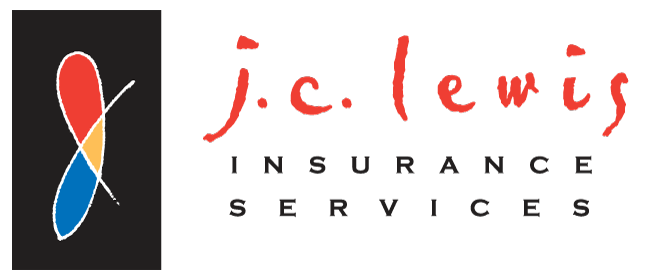
Health insurance coverage has become a costly and contentious issue in the last five years or so. For many Americans, having health insurance is not only required by law, it is a financial necessity. Especially for families and seniors.
However, while many Americans have benefited from subsidized health coverage as a result of the Affordable Care Act (ACA), others have seen their monthly premiums rise dramatically year after year.
Even if you are younger and single, having affordable health coverage is important. While no one wants to think they may need major medical care, things happen. And having health insurance coverage can help prevent you from suffering a potentially devastating financial blow due to unexpected medical bills.
If you are single and your employer doesn’t provide health benefits, an individual plan may be the best option for you. And, thanks to the ACA, you can no longer be denied health insurance coverage due to a pre-existing health condition and you can’t be denied benefits due to pre-existing exclusion periods.
Regardless of how you obtain your health insurance coverage, it’s still smart to maximize whatever coverage you have to get not only the most for your money, but for your health.
Smart Ways to Maximize Your Coverage
No matter what plan you have, there are several things you can do to get the most out of your benefits and coverage. Here are three tips to help you:
1. Choose In-Network Providers
Often, you’ll pay a lower rate for services by using in-network providers and staying within your insurance plan’s network as much as possible. Typically, you will be paying out-of-pocket for a number of services before your deductible is met, so it is best to get the best price possible for those services.
Another tactic is to let your doctor’s office know that you have a high-deductible plan and ask for a cash discount. Many times, doctors or hospitals will offer a substantial discount if you’re are able to pay cash for the entire out-of-pocket costs. In addition, some doctors and hospitals can offer low- or no-interest payment plans.
2. Price Shop Prescriptions and Pharmacies
If and when you are given a prescription, always ask your provider if there is a generic version of the medication prescribed. If you find that there is, indeed, a generic available, it’s smart to shop around for the best price. Just because it’s generic doesn’t mean the price is! For example, a Consumer Reports survey recently found a price difference of over 440 percent in the price of generic versions of five commonly prescribed medications.
Different brands charge different prices for essentially the same product. And this is true for pharmacies, as well. Along with brick-and-mortar stores there are now many online “mail order” sites that offer great discounts on many generics.
This is an especially valuable strategy If your prescription isn’t covered by your insurance. And even if your prescription is covered along with a copay or at a coinsurance rate, you may still pay less with a generic version.
3. Maximize Your Deductible
With most plans, once you’ve reached your deductible limit, you’ll pay little or nothing out of pocket for any healthcare you use above and beyond that. In other words, once your deductible is met, you will pay for your health care needs at what is known as a coinsurance rate.
This means your insurer pays for a percentage of your bill, typically from 60 to 90 percent, until you reach your out-of-pocket maximum. Once your out-of-pocket maximum is reached, your insurer will then cover 100 percent of any bills submitted to them. Keep in mind, however, that your deductible and your out-of-pocket maximum are reset every year or if you change insurance providers.
Once you’ve met your deductible for the year, a great strategy is to schedule appointments for such things as cancer screening, vision check-ups, or any other health care services you need. And, while you can have these done at a significantly decreased cost, you may still owe a copayment or coinsurance after you reach the deductible, depending on your plan.
Similar to this strategy is planning needed health care procedures with the goal of reaching your deductible maximum as soon as possible. By planning and scheduling these healthcare costs strategically you can fulfill your deductible or out-of-pocket maximum sooner, which allows you to pay less for all subsequent procedures you might want done during that year of coverage.
If you cannot reasonably max out your deductible before having an expensive procedure done – and it is something you can schedule and not an emergency – you can budget for it throughout the year, or during the year prior, and schedule the procedure for the start of the following year. This way you aren’t hit with a costly bill afterwards that you have to finance or ask for a payment plan up front. With the cash in hand you can avoid paying interest and still maximize your health insurance benefits.
Be Aware of Your Out-of-Pocket Maximum
And here’s a bonus tip: Most people know what the deductible is on their plan, but very few are aware of their out-of-pocket maximum.
According to the website Healthcare.gov, an out-of-pocket maximum or limit is,
“The most you have to pay for covered services in a plan year. After you spend this amount on deductibles, copayments, and coinsurance, your health plan pays 100% of the costs of covered benefits.”
The strategic value of knowing your out-of-pocket maximum can help is that it allows you to plan your healthcare appointments so that you pay nothing for elective or optional procedures. Knowing your out-of-pocket limit and how much a covered procedure will cost allows you to maximize your health insurance benefits for the year.
Typically, a plan’s out-of-pocket maximums and deductibles will be different for individuals and families. This means that if you have a family plan, one person may reach their deductible before the others. The deductible and out-of-pocket maximum for the entire family is also far higher than that for each individual. Being aware of and tracking these amounts for each person and for the family can help you maximize your health insurance benefits.
Being Strategic With Your Coverage
Employers in California, as well as other states, have been cutting their costs of health insurance they must provide for employees. One of the ways they have done this is to offer more high-deductible health plans. While the premiums for these plans tend to be lower, the out-of-pocket costs before the insurance coverage kicks in can be quite high. High deductibles are also typical for many plans available on the federal and state health insurance marketplaces, such as Covered California, created under the Affordable Care Act. So, making the most of the strategies available to you for cutting your out-of-pocket costs makes sense.
